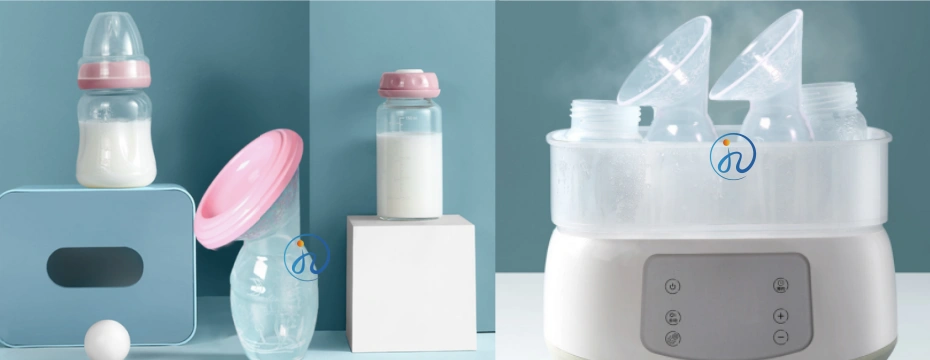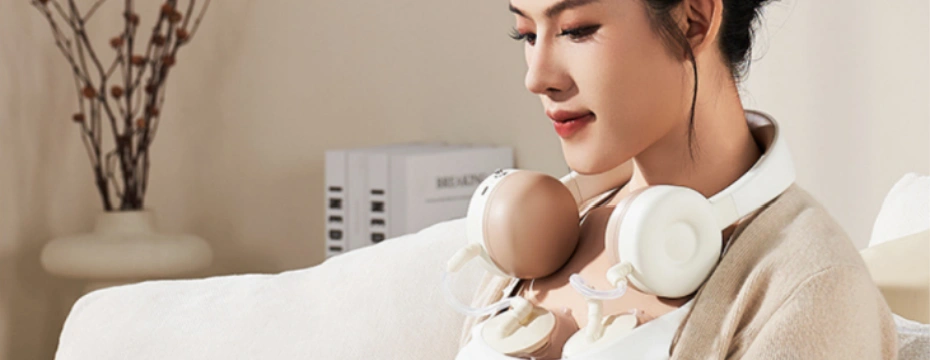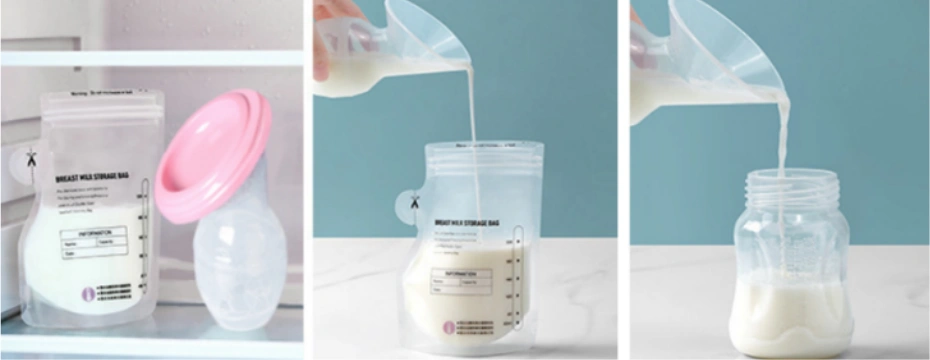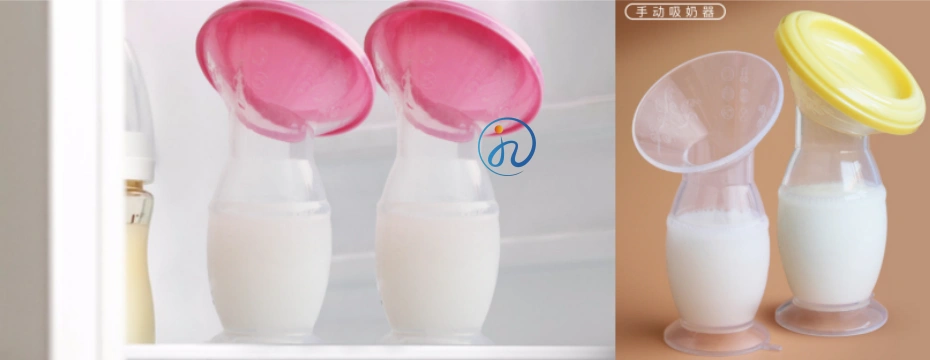Table of Contents
ToggleIn the world of breastfeeding and pumping, innovation continues to make life easier for new mothers. Among the various tools available, the silicone breast pump has gained significant popularity for its simplicity, efficiency, and comfort. But what exactly is a silicone breast pump, and how does it work? This comprehensive guide will delve into everything you need to know about this revolutionary device, its benefits, how to use it, and why it might be the perfect addition to your breastfeeding journey.

Understanding the Silicone Breast Pump: A Basic Overview
A silicone breast pump is a type of manual, hands-free breast pump made primarily from food-grade silicone. Unlike traditional electric or battery-operated pumps, it operates without tubes, motors, or complex parts. The most common design is a simple, funnel-shaped device that uses suction to collect milk from the breast. It is often referred to as a “passive” or “manual” pump, but its functionality is unique.
The classic example is the Silicone Breast Pump, which has become synonymous with this category. However, several brands now offer similar products, all leveraging the same fundamental principle of suction.
How Does a Silicone Breast Pump Work? The Science Behind the Simplicity
The operation of a silicone breast pump is elegantly simple, relying on physics rather than machinery. Here’s a step-by-step breakdown of how it works:
- Suction Creation: The pump is made of soft, pliable silicone. You squeeze the bulb-like base of the pump and place the flange (the funnel part) over your nipple and areola, ensuring a tight seal against your breast.
- Passive Collection: Once attached, you release the squeeze. The silicone naturally attempts to return to its original shape, creating a gentle, constant vacuum (suction). This suction mimics a baby’s latch, stimulating your let-down reflex.
- Milk Ejection: As your milk lets down, it flows naturally into the pump’s collection chamber. The suction helps to draw out the milk without any active pumping motion required from you.
- Hands-Free Operation: Because the suction holds the pump in place, it is effectively hands-free. You can use it on one breast while your baby nurses on the other—a common and highly effective technique for catching let-down milk that would otherwise be wasted on a nursing pad.

Key Benefits of Using a Silicone Breast Pump
Why are so many moms raving about this simple tool? The advantages are numerous and address many common pain points of traditional pumping.
1. Ultimate Convenience and Portability
Its compact, one-piece design has no cords, batteries, or parts to assemble. You can easily carry it in a diaper bag, use it anywhere, and clean it in seconds. It’s perfect for travel or quick use at home.
2. Completely Silent Operation
Unlike the loud hum of an electric pump, a silicone breast pump works in utter silence. This allows you to express milk discreetly, even next to a sleeping baby or partner.
3. Hands-Free Functionality
This is a game-changer. You can express milk from one breast while nursing or bottle-feeding your baby from the other. This multitasking ability saves a tremendous amount of time.
4. Gentle and Comfortable
Made from soft, medical-grade silicone, these pumps are extremely gentle on sensitive breast tissue. The suction is natural and steady, avoiding the sometimes painful pulling sensation of some electric pumps.
5. Catches Let-Down Milk Efficiently
Many mothers experience leakage from the opposite breast during nursing. A silicone breast pump effortlessly catches this valuable liquid gold, helping you build a freezer stash without any extra effort.
6. Easy to Clean
With only one piece and no tiny valves or membranes to worry about, cleaning is incredibly straightforward. It’s also dishwasher safe (top rack) and easy to sterilize.
7. Affordable Price Point
Compared to high-end electric double pumps, a silicone pump is very affordable, making it an accessible tool for almost every breastfeeding mother.
How to Use a Silicone Breast Pump: A Step-by-Step Guide
Using your pump correctly is key to getting the best results.
- Sterilize: Before first use, sterilize the pump by boiling it in water for 2-3 minutes or according to the manufacturer’s instructions.
- Get into Position: Find a comfortable sitting position. Leaning forward slightly can help with milk flow.
- Create Suction: Flip the flange lip outward. Firmly squeeze the base of the pump, place the flange over your breast, ensuring a perfect seal all around, and then release the base.
- Let it Work: You should feel a gentle tug. Leave the pump in place and let it do its job. If suction decreases, gently squeeze the base again.
- Remove Safely: Never just pull the pump off, as this can be painful. Break the seal first by inserting a clean finger between the flange and your breast or by gently squeezing the base again.
- Transfer Milk: Pour the expressed milk into a storage bag or bottle, label it, and store it properly.

Pro Tip: Use it during your morning feed when milk supply is often highest, or on the opposite breast while nursing to maximize output.
Silicone Breast Pump vs. Electric Pump: Which is Right for You?
It’s not about one being better than the other; they serve different purposes. Think of a silicone breast pump as a fantastic supplement to your electric pump.
- Electric Pump: Ideal for exclusively pumping, building a large supply quickly, double pumping, and for mothers who need powerful stimulation to maintain supply.
- Silicone Breast Pump: Ideal for catching let-down, occasional use, relieving engorgement, quick sessions, travel, and as a backup pump.
Many moms find that using both in tandem is the ultimate strategy. They use the electric pump for main sessions and the silicone pump to catch extra milk throughout the day.
Frequently Asked Questions (FAQ) About Silicone Breast Pumps
Q: Can a silicone breast pump replace my electric pump?
A: For some moms with a strong supply who are primarily nursing, it might be sufficient for occasional use. However, for exclusive pumpers or those needing to establish supply, it is not a full replacement for a high-quality electric pump.
Q: How much milk can I expect to collect?
A: This varies greatly. Some moms may only collect an ounce or two of let-down, while others can express several ounces per session. It depends on your supply, time of day, and how you use it.

Q: Is it suitable for increasing milk supply?
A: It can help! Removing more milk from the breast signals your body to produce more. Using it consistently to catch let-down or express after feeds can contribute to a supply increase.
Q: How do I clean my silicone breast pump?
A: Wash with warm, soapy water after each use. It can be sterilized using steam bags, a sterilizer, or by placing it in a pot of boiling water for 2-3 minutes.
Q: Can I use it if I have a low milk supply?
A: Yes, absolutely. Its gentle suction can help stimulate let-down and remove milk effectively. Using it after nursing sessions can help ensure the breast is fully drained, which is crucial for supply.
Conclusion: Is a Silicone Breast Pump Worth It?
In a word, yes. A silicone breast pump is an inexpensive, incredibly useful tool that offers unique benefits no other pump can match. Its simplicity, comfort, and efficiency in catching let-down milk make it a invaluable asset for the vast majority of breastfeeding mothers. Whether you’re a new mom just starting your journey or an experienced parent looking for more convenience, this humble piece of silicone can truly make your life easier and help you save every precious drop of your liquid gold.

It might seem almost too simple to be effective, but countless mothers worldwide will attest to its game-changing impact. Consider adding one to your breastfeeding toolkit—you might just wonder how you ever managed without it.